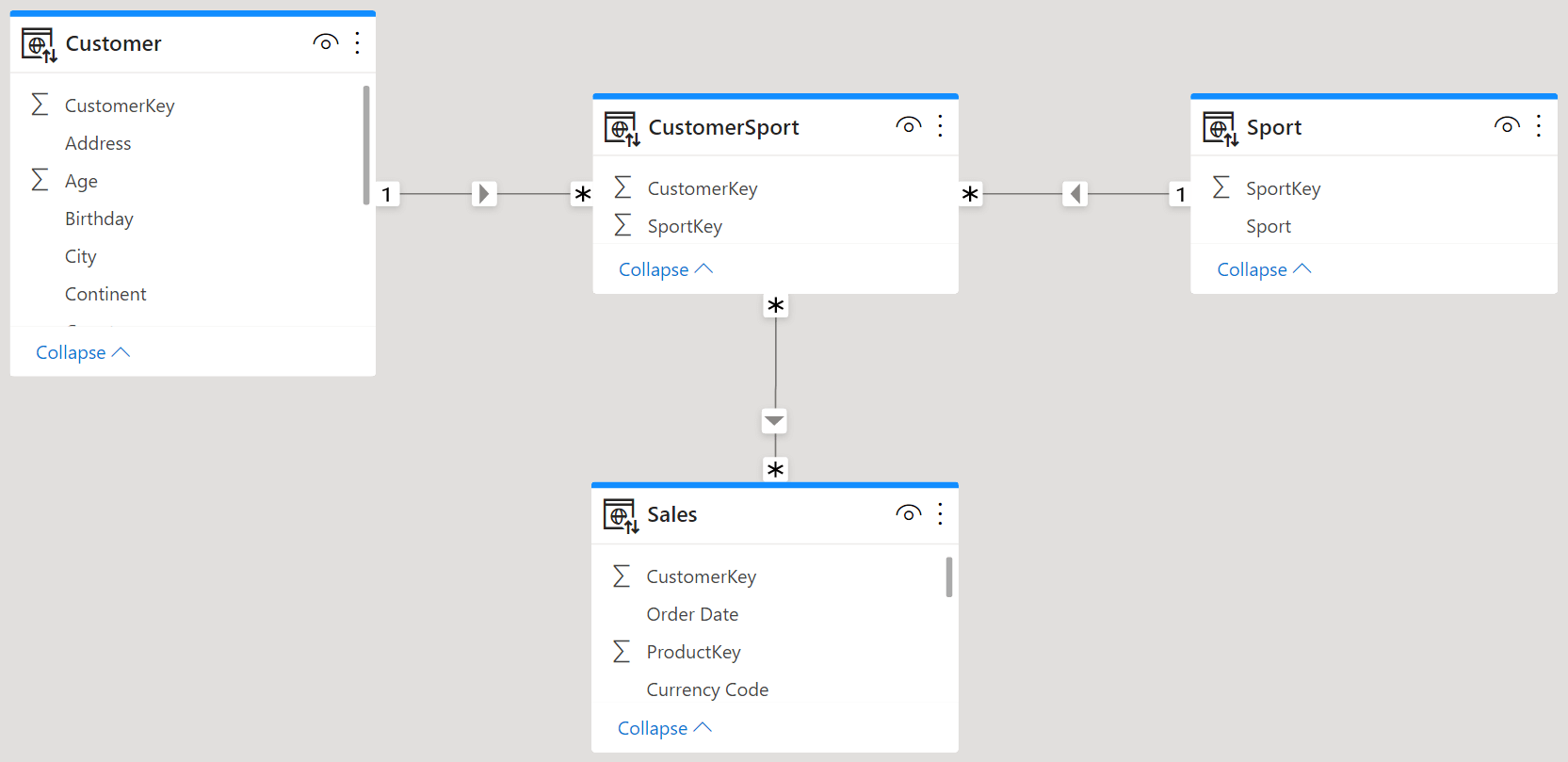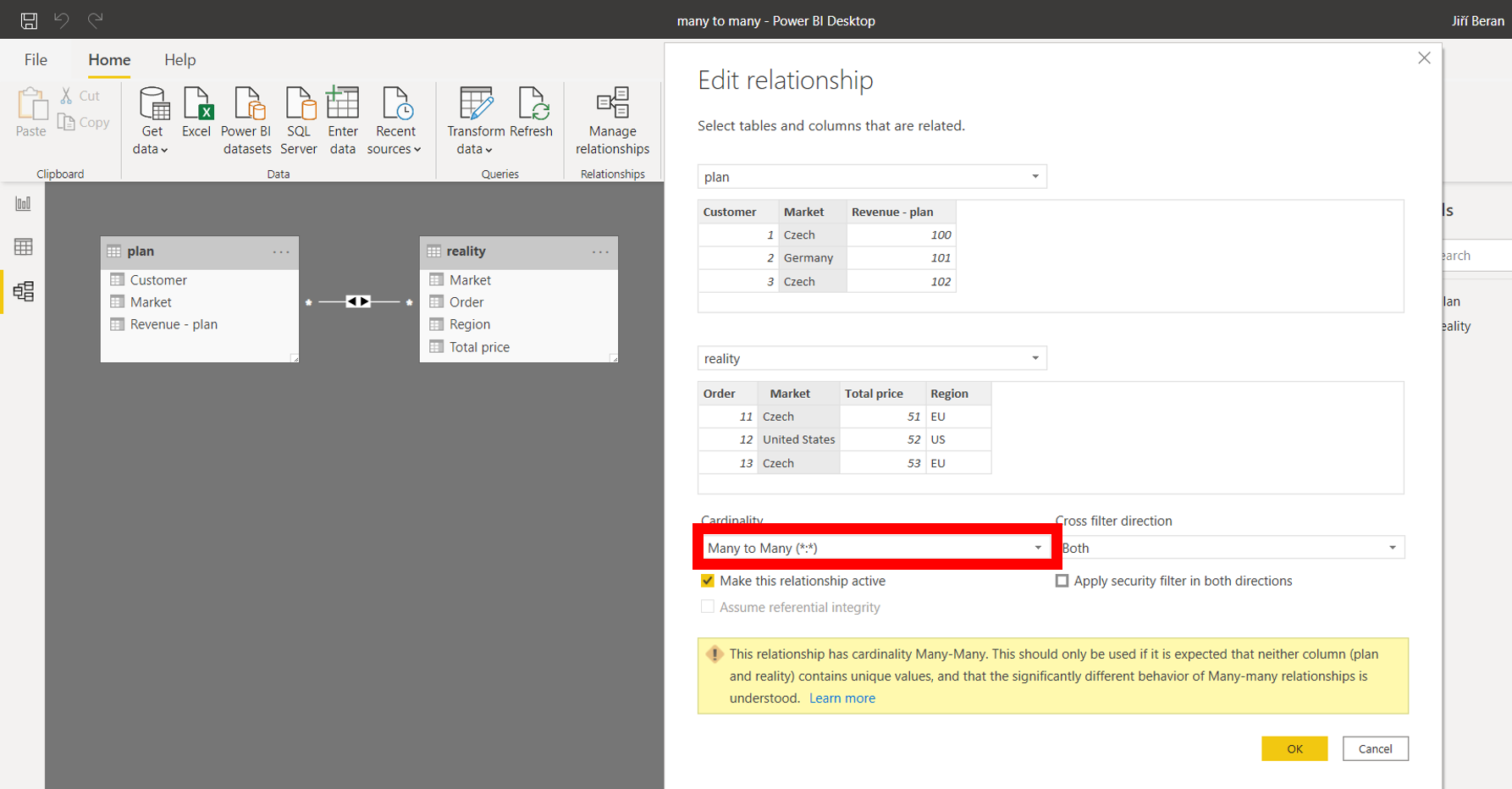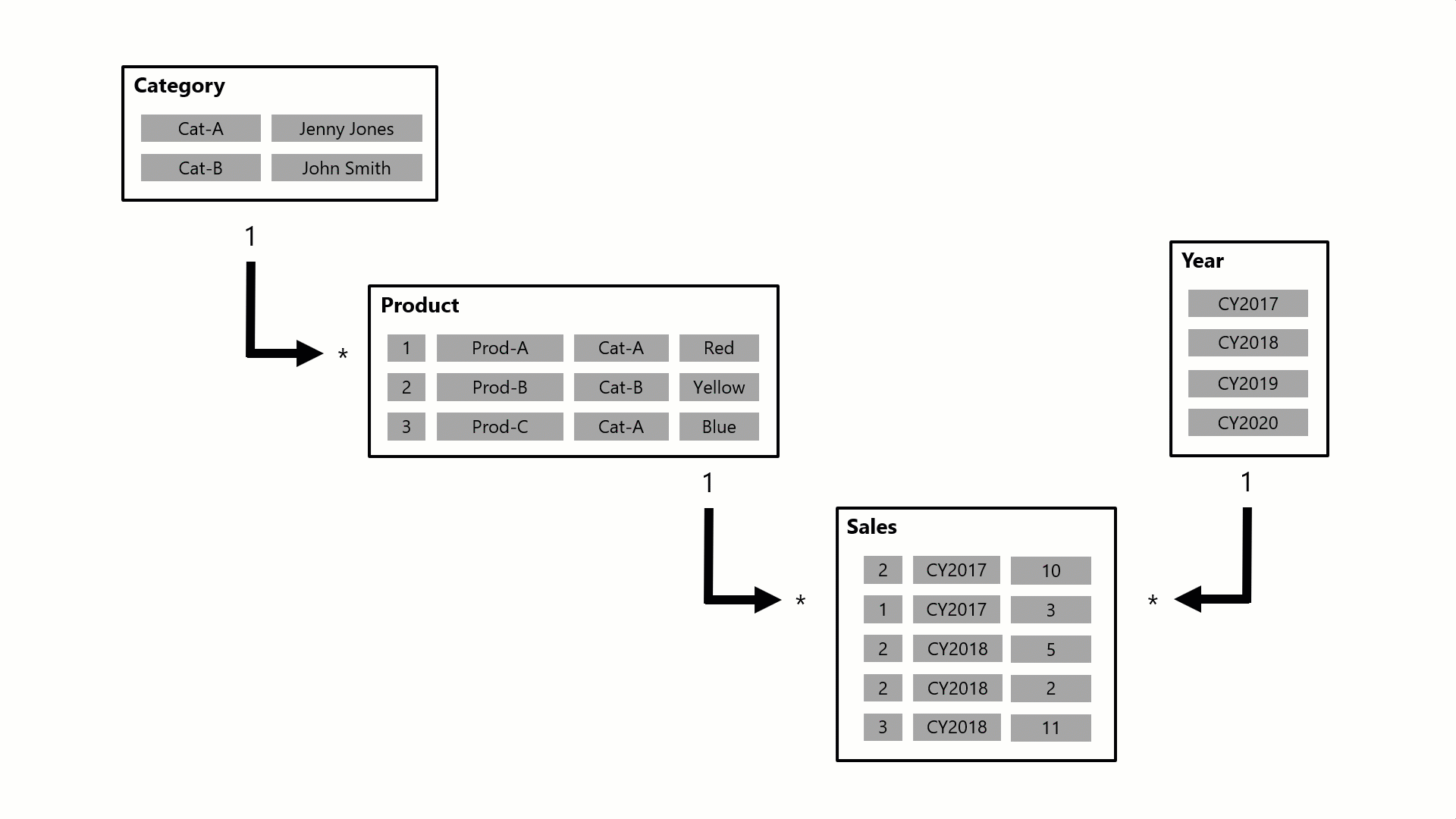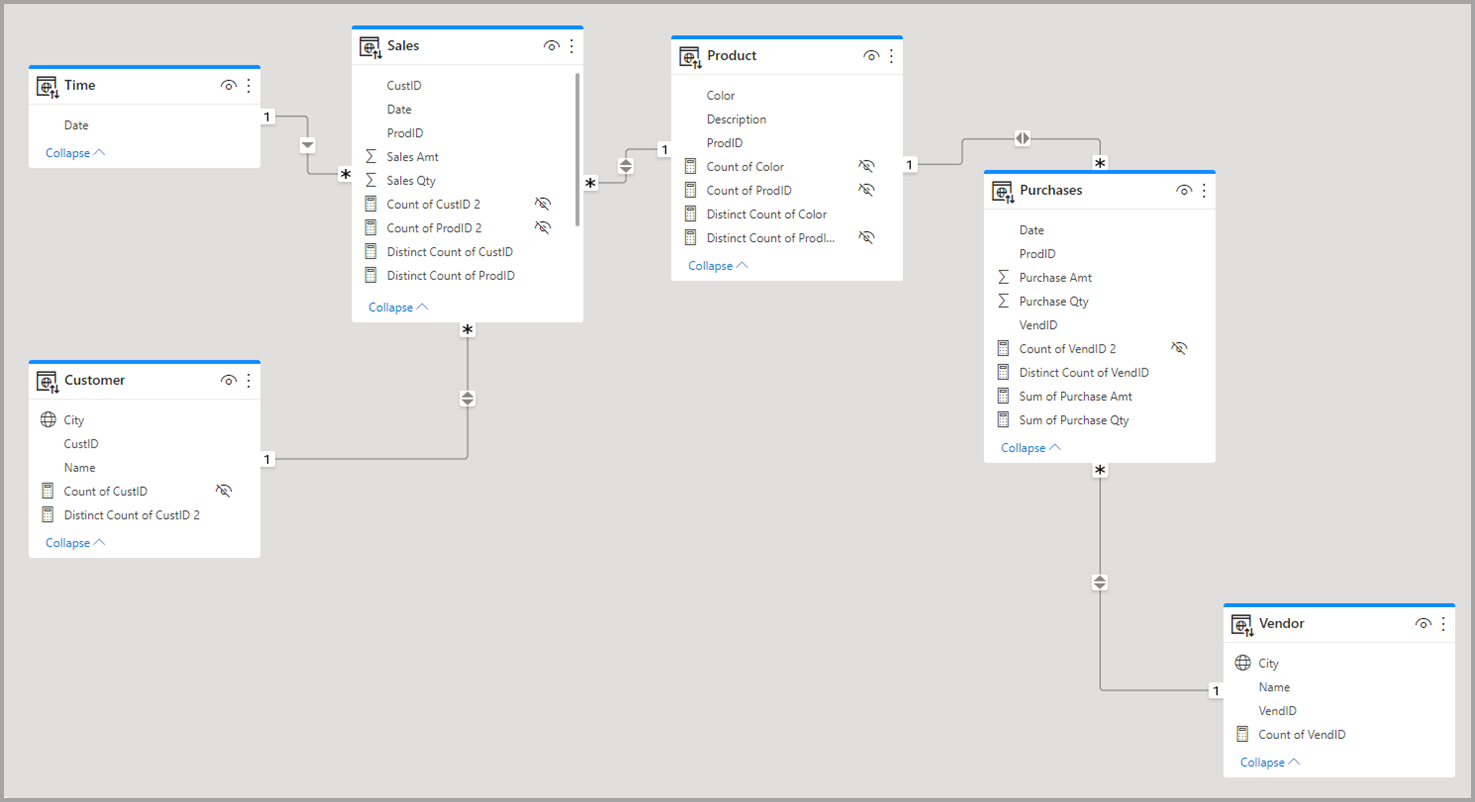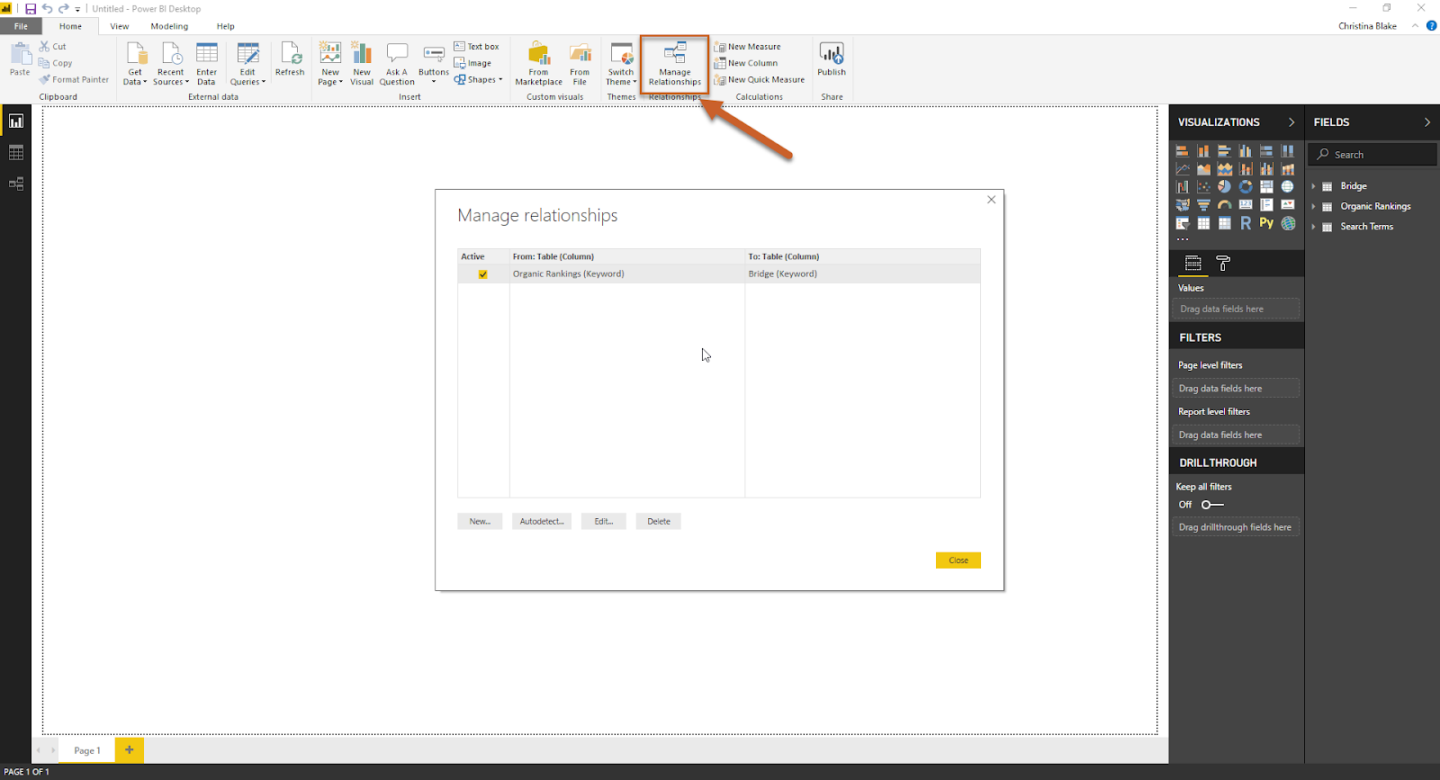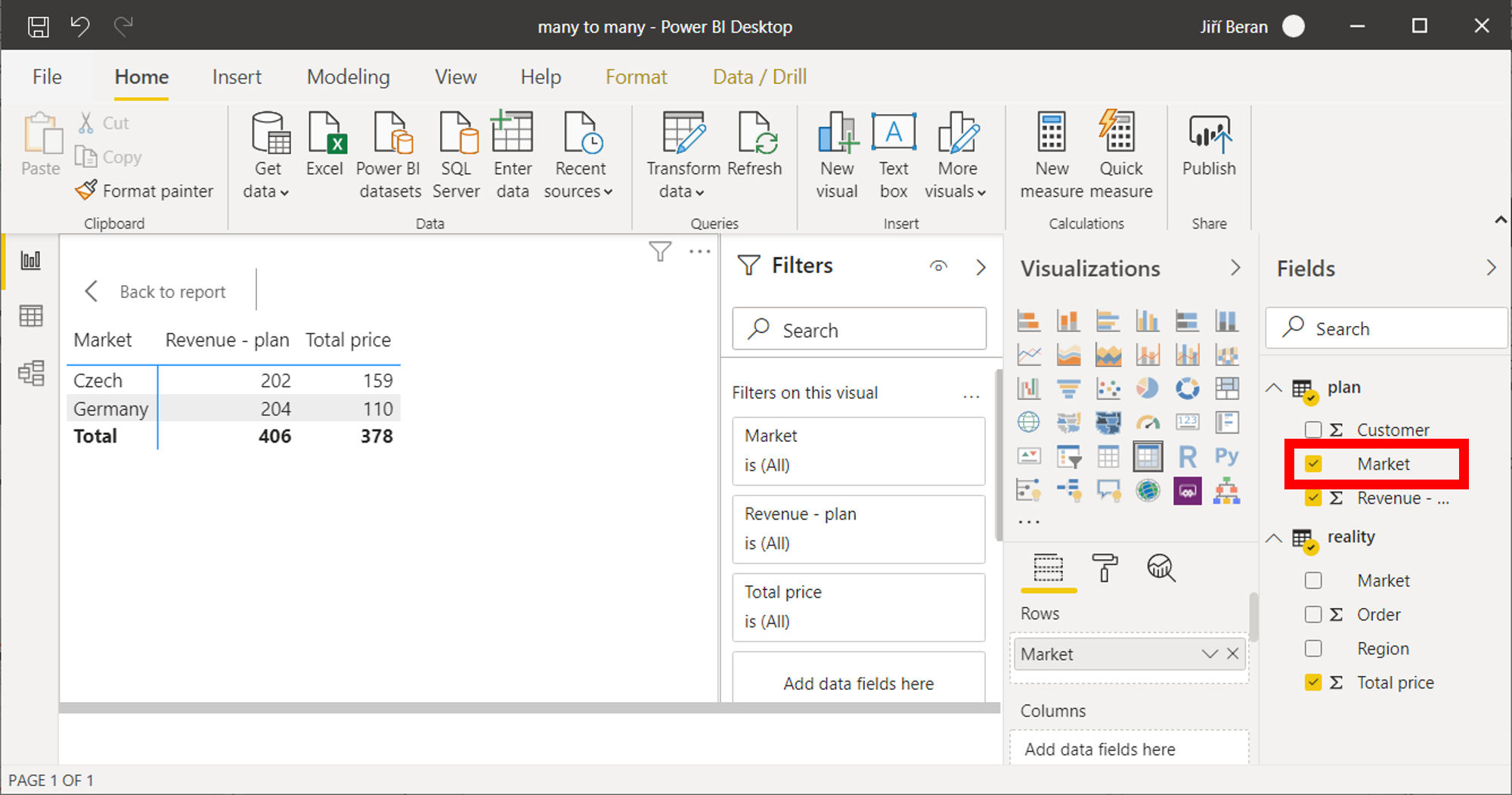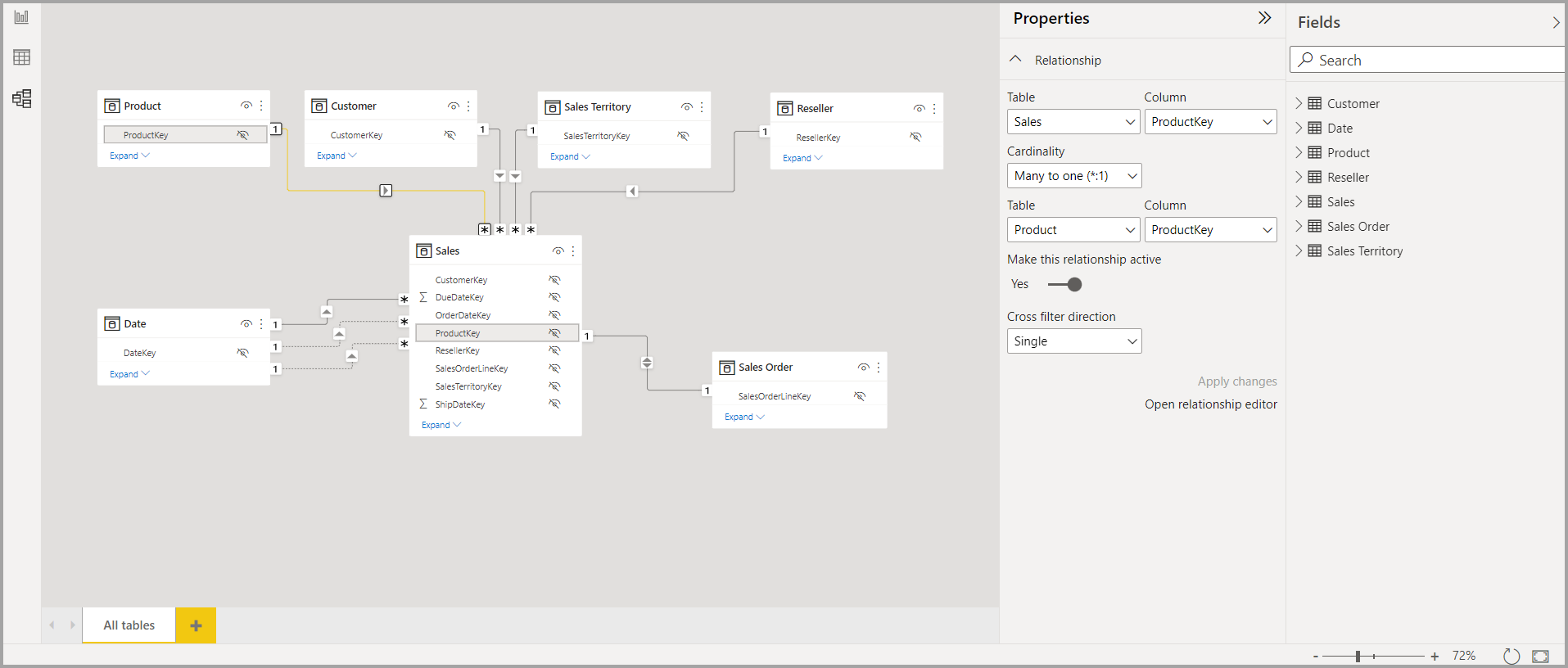A relationship with a many-to-many cardinality in Power BI Desktop is composed of one of three related features: Composite models: A composite model.
A many-to-many relationship means both columns can contain duplicate values. This cardinality type is infrequently used. It's typically useful when designing.
In order to avoid the manay-to-many relationship, you need to do the following steps. 1. Extract unique values from 1 table - Treat this as a Master Table.
Now, when I try to set up relationships between Budget and Dates, I can ONLY have a Many-to-Many relationship, EVEN THOUGH the Date column in the.
It affects three look-up tables, TributesFromPayments, SourcesFromPayments and FundsFromPayments. All Payments should have a Source.
Many-to-many: When relating two dimension-type tables, a bridging table is required. A bi-directional filter is required to ensure filters propagate across the bridging.
Here are the two tables, Supporter and Material Requests showing the relationship created by Power BI. The relationship is between CustomerKey in the.
Function: Match the data in the dimension table to the fact table, that is, find the data at one end along multiple ends, but only if the two tables have established a.
Many to one (*:1): A many-to-one relationship is the most common, default type of relationship. It means the column in a given table can have more than one.


